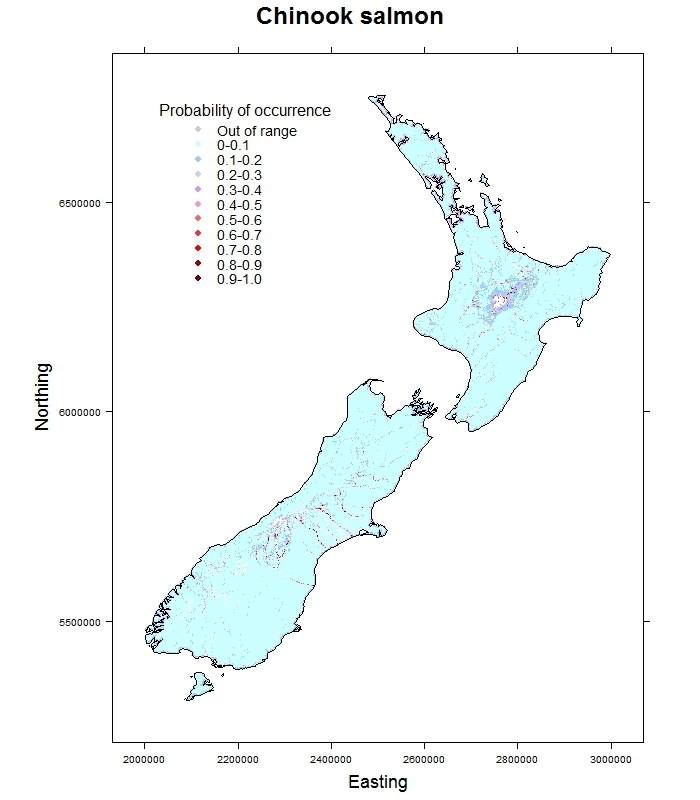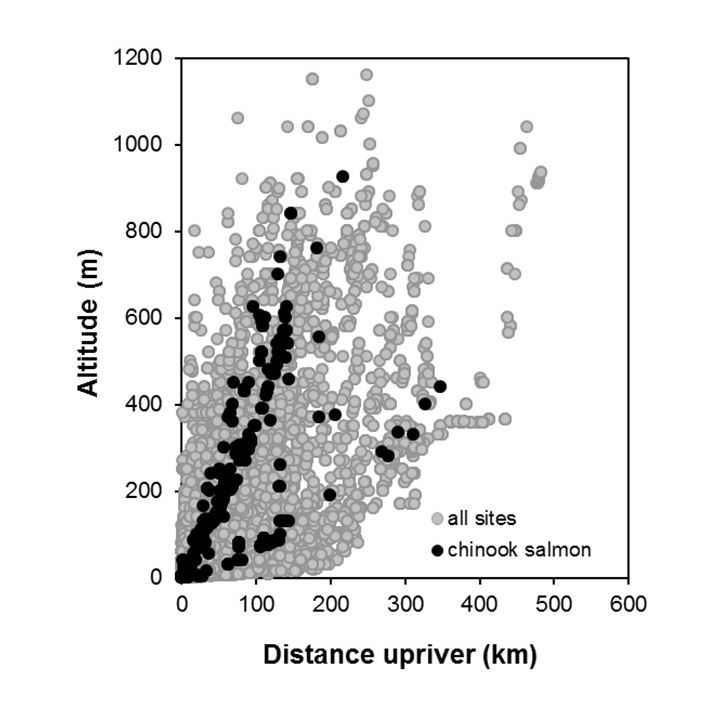Chinook salmon
Oncorhynchus tshawytscha (Walbaum, 1792)

Chinook salmon are one of three Pacific Salmonidae from the genus Oncorhynchus that has become established in New Zealand. Native to the northwest coast of North American and northeast Asia, the specific name of this fish (pronounced shaw-witch-shaw) comes from the Kamchatka Peninsula and is thought to refer to their distinctive black gums. This character can be used to distinguish chinook salmon from the other Salmonidae in New Zealand. This species is also known as quinnat or king salmon.
Chinook salmon in New Zealand have a life cycle that is typical of salmon in the North Pacific. The adults grow to maturity in the sea and migrate upstream to spawn, usually when they are three years old. After spawning, which occurs in autumn, all of the adults die. Juveniles hatch in spring, and typically spend 3 months in fresh water before migrating downstream to enter the ocean in summer. In some populations, a second downstream migration, consisting of individuals that have spent a year in fresh water, occurs the following spring.
Chinook salmon are a highly prized sports fish in New Zealand although the population is not large enough to support commercial fishing. However, there are a number of successful salmon farms in New Zealand, and it is possible to buy fresh chinook salmon in most supermarkets nowadays. When the spawning migration of adult fish is in progress between December and April, picket lines of eager anglers are a common sight at major river mouths along the east coast of the South Island. Salmon lose condition as they migrate upstream and thus the most prized fish are those caught soon after arrival in fresh water. Chinook are the largest Salmonidae in New Zealand, commonly reaching 10–15 kg in weight.
Chinook salmon occur mainly on the east coast of the South Island from the Waiau River in the north to the Clutha River in the south. The main runs occur in the large braided rivers – the Waimakariri, Rakaia, Rangitata and Waitaki. There are also small runs in the Paringa, Taramakau, and Hokitika River on the west coast, but other records of Chinook salmon on the west coast are probably stray fish. A few land-locked stocks are also known from lakes along both the east and west coasts. Although juvenile fish have been caught in some North Island rivers, indicating successful spawning had occurred, there are no consistent runs of Chinook salmon in the North Island.
![Chinook salmon - distribution map [2024]](/sites/default/files/styles/wide/public/2024-02/Chinook%20salmon.jpeg?itok=GQpOKCHg)


